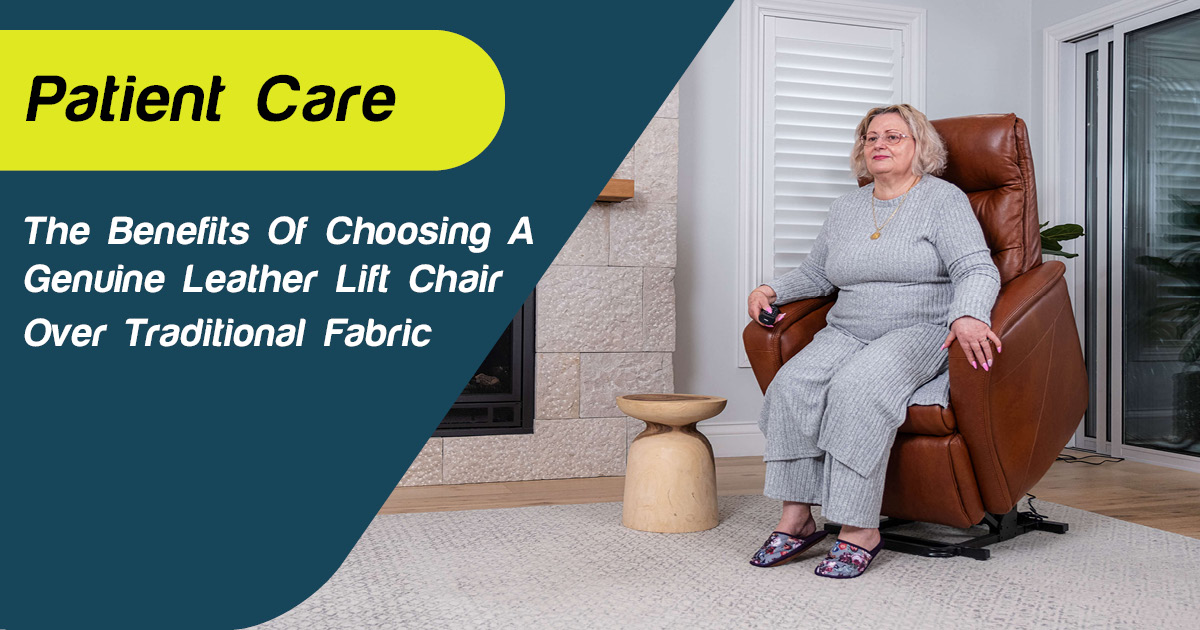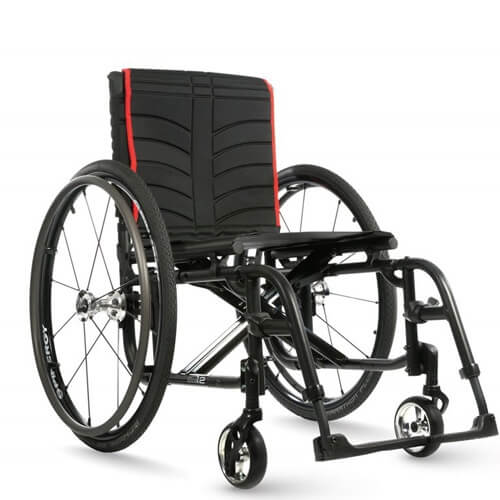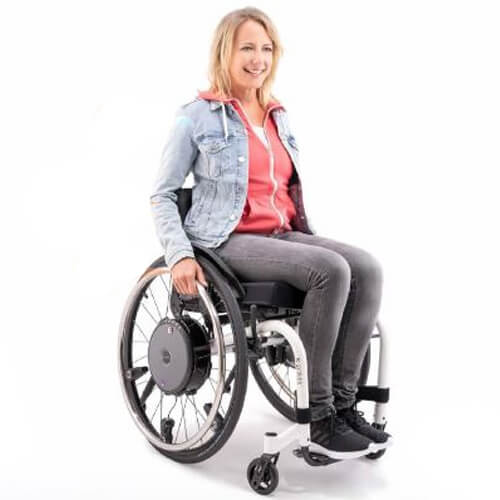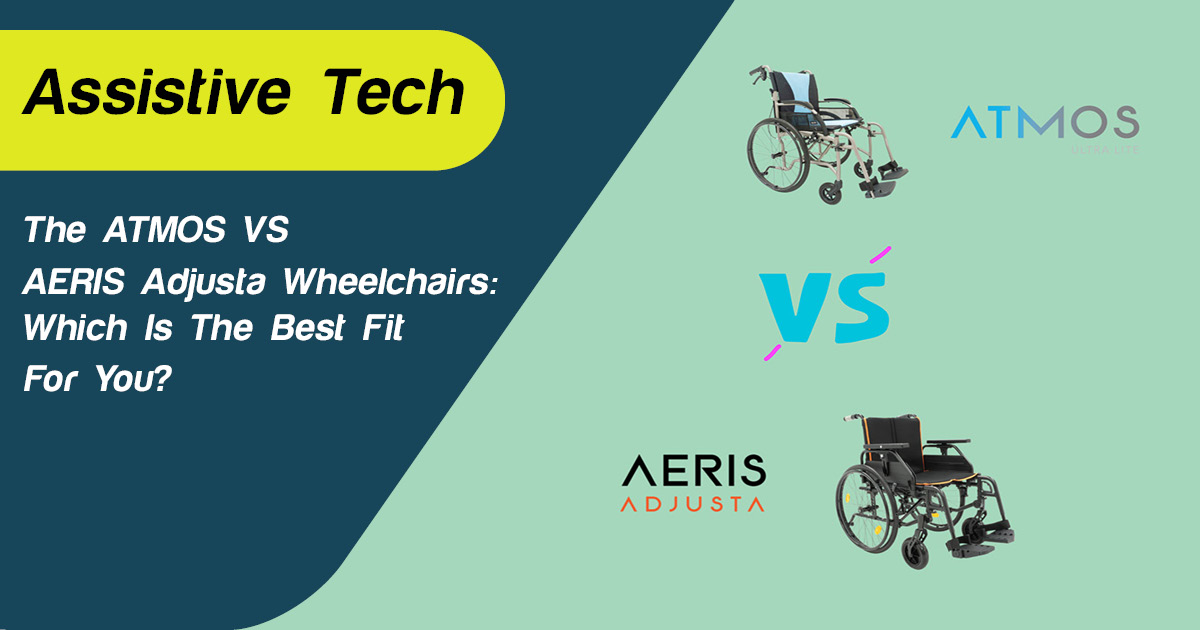
Share
When it comes to finding the perfect wheelchair, one size doesn't always fit all. For those with more specific mobility needs, a scripted wheelchair offers a highly tailored solution to provide optimal comfort, support, and functionality.
Here, we’ll explain everything you need to know about scripted wheelchairs, including the steps to customise one to suit your unique requirements. Whether you're looking for manual, electric, or tilt-in-space options, this guide will help you easily navigate the process.
What is a scripted wheelchair?
A scripted wheelchair is a highly customised mobility solution designed to meet an individual's needs, ensuring maximum comfort, support, and functionality.
Unlike standard off-the-shelf wheelchairs, scripted wheelchairs are tailored to the user's unique body measurements, posture requirements, and physical condition. This personalisation ensures that the wheelchair provides the optimal support for daily activities, rehabilitation, or long-term care.
Scripted wheelchairs can be manual or electric and include a range of customisations, such as specialised backrests, cushions, headrests, and tilt-in-space functionalities, to accommodate the user’s needs and improve overall quality of life.
Designing a scripted wheelchair with Active Mobility

At Active Mobility, designing a scripted wheelchair is a collaborative process that involves the client, healthcare professionals, occupational therapists (OTs), and our highly skilled team. From initial consultations to trials and demonstrations, we take every step necessary to ensure that each wheelchair fits perfectly and serves its intended purpose.
#1: Gathering Key Information
We work closely with the OT and the client to gather as much information as possible before conducting a trial or demonstration. This includes completing a Trial Request Form, which helps us capture critical details about the user’s needs.
Photos, measurements, and thorough communication are vital during this phase, enabling us to select the appropriate models for testing.
Securing funding for a scripted wheelchair is a crucial step in the process (this information is requested in the Trial Request Form). Funding may come from government programs like the NDIS and My Aged Care, independent healthcare providers, or insurance companies.
It’s essential to identify the source early in the process. Some funding bodies may have pre-approved wheelchair models or budgets, which limits the number of options available to the client. Understanding these limitations upfront allows us to narrow down wheelchair models and ensure that the right product is within budget.
#2: Recommended Products
After reviewing the Trial Request Form, the second step in the design process is selecting the most appropriate wheelchair models. While the therapist and client can conduct their own research, we’ll provide expert recommendations based on their needs and preferences.
#3: Demonstration Appointment
Once the wheelchair models are narrowed down, we’ll arrange an in-person demonstration or “trial” with the client. We’ll bring the pre-selected model and other options to the demo for comparison, allowing the client to physically experience the wheelchairs and assess their comfort, functionality, and ease of use while exploring different customisation possibilities.
During the demo, we’ll work out precise sizing and necessary customisations, including backrests, cushions, headrests, and additional support features.
#4: Ordering Parts & Assembling the Wheelchair
Once funded and we’ve finalised the wheelchair model in the demo, we can begin the ordering and assembly process. Our expert workshop team handles everything from sourcing specialised parts to assembling the wheelchair in-house, ensuring that every component is tailored for the best fit and performance.
Once the parts arrive, our workshop team will adjust each wheelchair component to fit the client’s unique body measurements and posture requirements. This includes fine-tuning the frame, resizing seats, and correctly installing all custom features.
After the assembly is complete, we test the wheelchair to make sure it operates smoothly and meets the client's needs. When everything is ready, we bring the fully assembled wheelchair to the client for final adjustments and fittings, ensuring that every detail is perfect for delivery.
The importance of collaborating with healthcare professionals

ID 130699937 © | Dreamstime.com
Collaboration with healthcare professionals, particularly OTs, plays a key role in designing a scripted wheelchair. The healthcare team usually performs the initial diagnosis and assessment of the client’s physical condition; this assessment forms the basis of the Trial Request Form, which is essential for selecting the appropriate wheelchair features and customisations.
For example, in cases where the client has a complex condition like paraplegia or cerebral palsy, we may custom-make brackets for the joystick that controls an electric/power wheelchair. High-end models can even be equipped with advanced sensors to accommodate specific movements and postures, ensuring precise control and comfort.
The entire process—from diagnosis to wheelchair fitting—focuses on creating a solution that offers seamless mobility, pressure relief, and tailor-made support, ensuring the user’s long-term health and comfort.
Scripted electric vs scripted manual and tilt-in-space wheelchairs

Choosing between a scripted electric or manual wheelchair is a significant decision in the design process that depends on various factors, including the user’s mobility needs, lifestyle, and personal preferences.
Both options offer tailored customisations but differ in functionality, adjustability, and ease of use. Here's a quick comparison to help you understand the key differences.
Scripted electric/power wheelchairs

Scripted electric/power wheelchairs are powered by an in-built motor, making them ideal for individuals with limited mobility or strength in their upper body. These wheelchairs are designed to offer maximum independence, allowing users to move freely with minimal physical effort.
One of the major benefits of electric/power wheelchairs is their high level of adjustability. Many models come with advanced features such as power tilt, reclining, and elevating leg rests, which are crucial for pressure relief and positioning.
For example, a model like the Glide Centro 2.0 offers full customisation options, including joystick controls and the ability to grow with the user. It also features suspension for a smoother ride, especially over uneven surfaces, reducing the impact on the user’s body. Enhanced battery life ensures longer travel distances, while the compact frame allows easy indoor maneuvering. These features make electric/power wheelchairs a long-term solution, particularly for those with progressive conditions or requiring frequent postural adjustments.
Electric/power wheelchairs are also highly durable and can be fitted with various accessories and components to match the user’s needs. Whether it's specialised seating systems, backrests, or tilt-in-space functions, an electric/power wheelchair can be configured to offer unparalleled support.
Scripted manual wheelchairs

Manual wheelchairs rely on the user’s physical strength or the assistance of a carer to propel them. These wheelchairs are lightweight and more portable, making them an excellent choice for individuals who can self-propel or require a more transport-friendly option.
Scripted manual wheelchairs still offer a significant degree of customisation, though the features are typically less advanced than those of electric models.
For active users with upper body strength, manual wheelchairs provide the flexibility and simplicity they need for daily use. Brands like Quickie and Motion Composite are known for their high-performance manual chairs, which come with adjustable components such as seat width, height, and backrest positioning. These features ensure a comfortable fit while maintaining the wheelchair’s lightweight and maneuverable design.
Though manual wheelchairs may not have the powered mobility of electric ones, they are often designed to accommodate the user's physical growth and changing needs. Plus, they offer better maneuverability in tight spaces and are easier to store and transport, making them a practical option for users who frequently travel or need to fit their wheelchairs in a car.
Custom tilt-in-space wheelchairs

Tilt-in-space manual wheelchairs offer a middle ground between electric and manual options. These models are ideal for posture, providing a highly adjustable frame and tilt mechanisms for pressure care.
Tilt-in-space wheelchairs, such as the Quickie Iris, are commonly used for conditions like cerebral palsy, where posture support is critical, but cognitive limitations prevent the use of powered controls. This type of wheelchair is also cost-effective, as the manual base is pushed by a carer rather than powered by motors.
Power Add-Ons

A power add-on enhances the usability of both scripted manual and tilt-in-space wheelchairs by allowing a seamless switch between manual and powered modes.
This adaptability makes it ideal for users and support workers needing daily flexibility. Whether navigating long distances or requiring assistance on challenging terrains, the power assist ensures that users can easily manage their mobility while support workers can provide help when needed.
With its easy integration and ability to cater to individual needs, a power add-on offers convenience without compromising the independence and control of manual wheelchair use.
Other FAQs about complex or scripted wheelchairs
How do I know if I need a scripted wheelchair?
If you have unique mobility, postural, or medical needs that a standard wheelchair can’t meet, you may benefit from a scripted wheelchair. An OT or healthcare professional can help assess your requirements.
What kind of customisations can be made?
Scripted wheelchairs can be tailored to your exact needs, including adjustments to seat width, backrest, cushions, footrests, headrests, joystick controls (for electric models), and tilt-in-space features for pressure relief and comfort. We use products from premium brands like SPEX and Jay, which can be used to customise almost any wheelchair.
How long does it take to build and receive a scripted wheelchair?
The timeline varies depending on the complexity of the customisation and availability of parts. We work efficiently to ensure timely delivery while maintaining high-quality standards. Plus, where possible, we recommend Australian-made wheelchairs from brands like Glide and Quickie—we have close professional relationships with these brands, allowing us to source parts quickly.
Can I try different wheelchair models before making a decision?
Yes, we offer a trial process where you can test different wheelchair models to ensure the best fit for your needs. This is an important step in choosing the right wheelchair.
How do I care for and maintain my scripted wheelchair?
Regular cleaning, checking the tyres, and ensuring that all moving parts function properly will keep your wheelchair in good condition. We offer regular maintenance services to help with repairs and adjustments.
What happens if my needs change after I receive the wheelchair?
If your needs change over time, we can adjust or retrofit your wheelchair to suit your current condition better. Many scripted wheelchairs are designed to accommodate modifications.
Why choose Active Mobility?
With over 30 years of experience in the industry, Active Mobility is a trusted name when it comes to designing and customising scripted wheelchairs. Here’s why so many clients choose us for complex wheelchairs:
- Expertise: Our highly trained team works closely with healthcare professionals to design wheelchairs that fit the client’s needs, no matter how complex.
- On-Site Workshop: We have an on-site workshop to handle everything from minor modifications to building fully scripted wheelchairs from scratch.
- Convenience: We bring our wheelchair models directly to you for demonstrations and fittings, ensuring you can trial each option in your environment.
- Customisation: From simple modifications to complex customisations, we offer a wide range of options to make your life easier and more comfortable.
Ready to explore your options for a scripted wheelchair? Contact Active Mobility today. Let us help find the perfect solution for your mobility needs.









